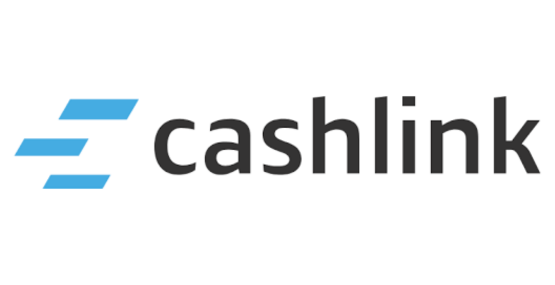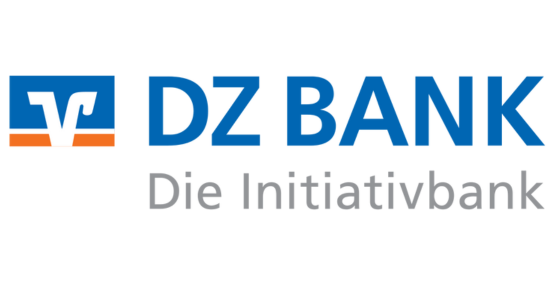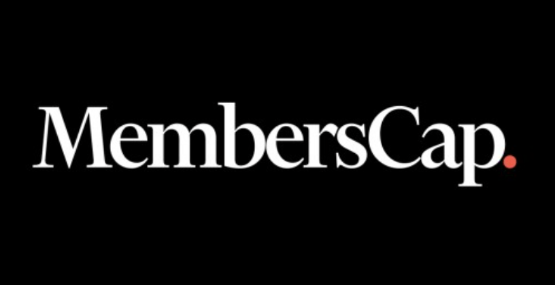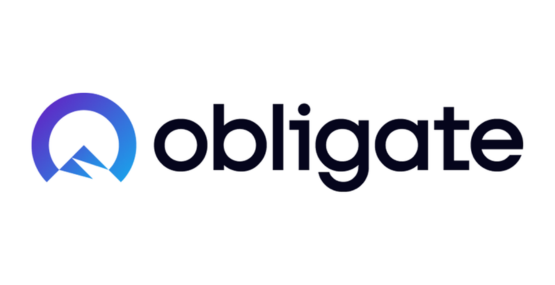

Digital Securities and Digital Cash Summit, Frankfurt
Date: 26th November, 2025
1 Day Event: 09.00 to 20.30

Two separate but related problems have plagued the financial markets for years. The first is that traditional forms of money and payment systems have reached their end of their useful lives. The second is that the capital markets are inefficient: issuers pay more for capital, investors earn less from capital and intermediaries have grown rich from adding transactions costs.
Change has occurred in the money and payments markets. The settlement of payments has accelerated. New payment service providers have emerged, displacing the banks. New payment instruments, such as Stablecoins, emerged from the cryptocurrency markets. But in the capital markets, a stalemate prevailed in which change appeared to be impossible.
The European Central Bank (ECB) Wholesale DLT Settlement trials have broken the stalemate. The trials were directed at one problem: how to overcome the lack of on-chain fiat currency to complete the cash leg of capital markets transactions on blockchain networks, especially in central bank money. But in identifying a solution to that problem, the trials opened a series of cost-saving and efficiency-enhancing possibilities.
These included the issuance of bonds and commercial paper, secondary trading of securities, settlement of securities, bilateral and triparty intra-day repo, margin payments and the servicing of assets in custody using smart contracts as well as wholesale payments versus payments and the value of tokenised deposits. In short, the trials have proved that blockchain technology works across payments and capital markets.
The challenge now is to scale the breakthroughs achieved by the ECB and the 64 financial institutions that took part in the trials. The ECB has announced it will build on the success of the trials and develop a roadmap for change in 2026-27. Which means that banks, financial market infrastructures and their buy- and sell-side users, including asset managers and issuers, must start to plan for a tokenised future now. This event will help them do that.
Topics:
-
Did the ECB Wholesale DLT Settlement Trials solve the absence of cash on-chain or provide no more than a temporary fix?
-
Where have all the tokenised deposits gone?
-
Are euro Stablecoins poised to overthrow the status quo in corporate and consumer payments?
-
Are traditional financial market infrastructures (FMIs) such as stock exchanges and central securities depositories (CSDs) in danger of being overtaken by events?
-
How can issuers and investors best be engaged in making the change?
Venue:
Jones Day Offices, Nextower, Thurn-und-Taxis-Platz 6, 60313 Frankfurt am Main, Germany
Keynote Speaker
Speakers
Moderators
Agenda
Click the plus signs to read more about each panel.
Did the ECB Wholesale DLT Settlement Trials solve the absence of cash on-chain or provide no more than a temporary fix?
1. Why is cash settlement crucial to the growth of security token markets?
2. What did the ECB wholesale DLT settlement trials aim to find out?
3. Did the ECB trials prove that token transactions can be settled in central bank money without fiat currency on-chain?
4. Why did the ECB trials abjure on-chain forms of money?
5. Have the ECB trials proved that central bank digital currencies (CBDCs) are unnecessary?
6. How is the proposed interoperability link between blockchain networks and existing payment systems expected to work?
7.How easy will it be to scale the findings of the trials?
8. What is the impact of the ECB plans on the planned transition to a T+1 settlement timetable within the euro area in October 2027?
9. What are the implications for currencies other than the euro?
10. What are the implications for cross-border, cross-currency transactions?
11. What should banks do now to align their systems with the ECB vision of the future?
12. Is the model that emerged from the trials in effect a temporary work-around prior to the introduction of a CBDC (or other forms of on-chain fiat currency)?
Panellist:
Michael Duttlinger – CEO at Cashlink
Michael Cyrus – Head of Short Term Products, Equity Finance & FX at Deka Bank
Co-Pierre Georg – Director at the Frankfurt School Blockchain Centre
Marius Jurgilas – Founder and CEO of Axiology
Bruce Jackson – Chief Capital Officer and Senior Partner at MembersCapWhere have all the tokenised deposits gone?
1. When the European Banking Authority polled EEA central banks it identified only one ‘live’ case and two reported projects of tokenised deposits, one of them a consortium. What explains the limited interest?
2. What is the status of the Commercial Bank Money Token (CBMT) project led by the Federation of German Industries and the German Banking Industry Committee?
3. Does the use of the tokenised deposit in issue indicate that tokenised deposits are better suited to some transaction types than others (e.g., payments versus payments in cash markets, delivery versus payment in securities markets)?
4. Tokenised deposits issued so far (are being used to settle transactions internally within banks between clients of the same bank. What are the obstacles to using tokenised deposits to transfer value between banks?
5. Project Agorá and the Regulated Liability Network, both supported by banks, are proceeding on the basis that tokenised deposits are a sound underpinning for a new financial market infrastructure based on a unified ledger or common platform. What explains the lack of initiative by individual banks?
6. Which makes better commercial sense for banks to issue: tokenised deposits or Stablecoins?
7. What are the advantages of tokenised deposits (e.g., limited impact on the current division between central and commercial bank money, programmability, disintermediation, faster customer-on-boarding through digitisation of compliance checks and controls, settlement in central bank money outside central bank hours, more efficient cross-border and cross-currency settlement, e.g., Partior)?
8. Unlike Stablecoins, which are regulated as electronic money tokens (EMTs) and Asset-Referenced Tokens (ARTs), tokenised deposits are not regulated under the Markets in Crypto-assets Regulation (MiCAR). Can tokenised deposits be issued under existing bank regulations in Europe, including their capital, liquidity and leverage constraints and mandatory contributions to deposit guarantee schemes?
9. How will tokenised deposits interoperate with other forms of digital cash such as CBDCs and Stablecoins?
10. How can tokenised deposits enable final settlement in central bank money?
11. Might tokenised deposits undermine the funding and liquidity management of banks, and even cause bank “runs”?
12. How should financial institutions be preparing for tokenised deposits in terms of systems and processes (e.g., issuance, transfer, operational security, regulatory compliance, customer access, collective ownership or outsourcing of the necessary infrastructure to specialist firms)?
Panellist:
Manuel Klein – Head of Market Management and Digital Currencies at Deutsche Bank
Claus George – Head of Digitisation and Innovation at DZ Bank
Gilbert Verdian – CEO at Quant
Are euro Stablecoins poised to overthrow the status quo in corporate and consumer payments?
1. A total of 14 euro denominated Stablecoins are in issue, including EURC from Circle, EURS from Stasis, EURCV from Société Générale, AEUR from Anchored Coins, EURI from Banking Circle and EURt from Tether) but even the biggest is tiny by comparison with US dollar Stablecoins. What explains the limited capitalisation of euro Stablecoins?
2. What useful knowledge have the euro Stablecoin pioneers such as Circle and Société Générale accumulated?
3. What is the status of the proposed DWS regulated euro Stablecoin?
4. What impact has MiCAR had on non-compliant euro Stablecoins such as EURt?
5. Stablecoins are used primarily by participants in the cryptocurrency markets or to settle illicit transactions. Is formal regulatory status (such as that afforded by MiCAR) sufficient to attract corporate treasurers and institutional money (e.g. will a money market fund manager hold EURC for liquidity or will a corporate treasury use a bank’s token to pay suppliers?)?
6.An ECB study in 2024 found Stablecoins are vulnerable to shocks in both the cryptocurrency markets and the traditional money markets. Is this a risk Stablecoins can grow out of?
7. According to a Bank for International Settlements (BIS) study of May 2025, Stablecoins (USDT and USDC only) account for nearly half cross-border flows in the cryptocurrency industry and are being used to settle transactions and send remittances as well as for speculative purposes.
What impact might a mature and sizeable euro Stablecoin market have on cross-border financial flows and the stability of the euro?
8. Signs that Stablecoins are disrupting traditional cross-border payments networks are accumulating (The Circle Payments Network (CPN), Stripe acquiring Bridge, the Ubyx start-up) and have regulatory encouragement. How concerned should regulated banks be?
9. Are payments initiatives that make use of existing payments infrastructures (such as Fnality and the ECB inter-operability mechanism) competitive with Stablecoins or complementary to them?
10. What are the benefits of Stablecoins over tokenised deposits and traditional fiat currency (e.g., programmability, speed, lower cost, yield, transparency, interoperability)?
11. How will Stablecoins interoperate with other forms of digital cash such as CBDCs and tokenised deposits?
12. Will Stablecoins compete with banks to hold deposits and government securities (HQLAs)?
Panellist:
Rupertus Rothenhauser – Chief Commercial Officer at AllUnity
Thomas Otendal - CFO at Ubyx
Myles Harrison – Chief Product Officer at AMINA Bank
Chris Bradbury – CEO at Summer.fi
Benjamin Duve – Global Head of Partnerships at GK8
Bala Nagaraj – Senior Manager at Neosfer
Are traditional financial market infrastructures (FMIs) such as stock exchanges and central securities depositories (CSDs) in danger of being overtaken by events?
1. Lack of fiat currency on-chain is often cited as an obstacle to progress with tokenisation of securities. Since the ECB trials have identified a workable solution, how should European FMIs be positioning themselves?
2. Solutions are also being found to the second major obstacle to the growth of token markets – namely interoperability – via initiatives such as SWIFT-Chainlink and the Wormhole platform. Do FMIs need to act now?
3. What progress has been made in linking the traditional financial markets to the tokenised markets?
4. Is peer-to-peer settlement, without intermediation by custodian banks and CSDs, a realistic possibility?
5. A series of Proofs and Concepts (POCs) and Pilot Tests have proved that issuing, trading and settling securities in tokenised forms on blockchain technology works. Are the benefits (e.g., faster settlement, reduced cost of carry, streamlined reconciliation, automated asset-servicing, broader investor access, reduced cost of intermediation) sufficient to spur adoption of tokenisation at scale without “native” issuance?
6. Established exchanges and CSDs are noticeable by their limited engagement with the e DLT Pilot Regime (the confirmed participants are 360X AG, CSD Prague and 21X AG). Are they working behind the scenes outside the Pilot Regime or doing nothing at all?
7. Is lack of legal and regulatory certainty still a valid excuse for inaction?
8. The financial market infrastructure in Germany has mad noticeable progress with both a leading token exchange start-up (21x) and a series of initiatives by Deutsche Borse (the digital securities platform D7, Deutsche Börse Digital Exchange, now re-branded as 3DX Digital Exchange, the acquisition of Crypto Finance AG, the provision of crypto-custody via Clearstream and a half-share in the 360X real world assets tokenisation platform). How much does this activity owe to German domestic legal and regulatory encouragement (i.e., eWpG, KryptoFAV etc.) as opposed to EU-level encouragement?
9. What more can EU and national regulators do to encourage progress (e.g., interoperability standards, digital identity adoption, regulatory reporting of on-chain transactions, ensuring settlement finality across jurisdictions)?
10. Why has collateral management emerged as a leading use-case for tokenisation (e.g., manufacturing liquidity)?
11. Traditional stock exchanges and central securities depositories have large networks of users that trust them. How can they turn these assets to advantage as markets tokenise?
12. Will the infrastructure that supports tokenised markets be a hybrid of the traditional and the new, or will the new supplant the traditional?
Panellist:
Sven Wilke – Executive Director Group Strategy, M&A and Innovation at Börse Stuttgart Group
Rachel Lum – Partner at IBM
Stephan Dreyer – CEO at ANNA Association of National Numbering Agencies
Thorsten Peisl – Founder and Chief Executive at KALYP Technologies
Thilo Derenbach – Head of Sales & Business Development Digital Securities Services at ClearstreamHow can issuers and investors best be engaged in making the change?
1. The ECB Wholesale DLT Settlement Trials have created a momentum for change within the banking industry. Is the engagement of banks enough to maintain progress in tokenised markets?
2. The trials involved more than 60 firms but only a handful (EIB, KfW, Siemens) of issuers took part. Does this mean issuers take no responsibility for capital markets?
3. Even fewer asset managers, and no end-investors, were actively involved in the ECB trials. Will the buy-side always wait to be offered a service rather than play any part in developing it?
4. Do banks (lower funding, capital, cash and collateral costs) have more to gain from tokenisation than asset managers (lower operational and compliance costs, increased distribution, fractionalisation, personalised investment strategies) or end-investors (higher returns) or issuers (lower cost of capital)?
5. To what extent does the engagement of non-bank market participants hinge on regulatory intervention?
6. To what extent are issuers and investors engaged already in the EU Capital Markets Union (CMU) project?
7. How well do asset managers, end-investors and issuers understand – and, importantly, believe in – the benefits of tokenisation?
8. What functions at a corporate issuer (e.g., CFO focused on balance sheet and shareholders, treasurer focused on day-to-day funding) have most to gain from tokenisation?
9. Issuers and asset managers and end-investors are reliant on “intermediaries.” Does that reliance need to be broken?
10. Does the emphasis on focused “uses-cases” and short-term returns (the “business case”) undermine the case for far-reaching change in the core equity, fixed income and fund markets?
11. Can a unified ledger or common platform accelerate adoption?
12. Can a government accelerate change by issuing its debt instruments on to a public blockchain at scale?
Panellist:
Torsten Hunke – Managing Director of VanEck (Europe)
Felix Simon – Senior Manager for Digital Asset Banking and Paying Agent Specialist at Incore Bank
Tobias Wohlfarth – Chief Business Officer and Deputy CEO at Obligate
Tim Armbruster – Group Treasurer at KFW

For more information contact:

















































.png)



